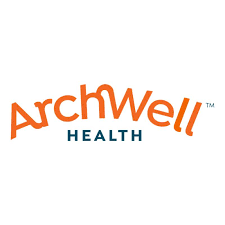As you get older, your health needs change a lot. What worked when you were in your 30s might not be enough when you hit your 60s. The best way to catch new issues is through preventive screenings so you can deal with them before they get too far along. That gives you more options and better outcomes. And at ArchWell Health, we believe those are the best results of all.14 Tests to Maintain Senior HealthArchWell Health offers many on-site preventive health screenings to give your physician the full picture of your health. Here are the 14 screenings we recommend for your best health in your 60s and beyond:1. Blood Pressure ChecksWhy to get itHigh blood pressure (hypertension) is a very common problem as people age. Even if you have no risk factors for cardiac events, your arteries, which carry blood throughout your body, do become less flexible as you get older. Uncontrolled, it can lead to cardiovascular disease and stroke, among other health issues.How it's doneA healthcare professional takes a simple check via an arm cuff. If it reads dangerously high, your provider may recommend an at-home kit for more regular checks.What happens nextYour doctor will recommend a hearty healthy regimen that may include:MedicationExerciseHealthy eating such as the Mediterranean and DASH dietsQuitting smoking and drinking less alcoholManaging stress through meditation, psychotherapy, yoga and mindfulness2. Cholesterol ChecksWhy to get itAccording to the Centers for Disease Control, almost 12% of people over the age of 60 have high cholesterol, which can dramatically increase your risk of heart disease and stroke. However, there are no symptoms, so you will never know you have it without checking until it may be too late.How its doneYour healthcare professional takes a blood sample also called a lipid panel or lipid profile after you have fasted for 9 to 12 hours. The National Heart, Lung and Blood Institute recommends annual screenings for people over 65.What happensIf your cholesterol falls outside of normal ranges, ask your physician about:Statin medicationsUpping your exerciseHealthy diets rich in unsaturated fats (again, the Mediterranean Diet is a great one)Quitting smoking3. Colorectal Cancer ScreeningWhy to get itThe third most common cancer and the second most common cause of cancer-related deaths around the world, colorectal cancer presents mainly in people over the age of 50.How its doneThe American Cancer Society recommends that people at average risk should get their first screening by age 45, and then continue up to age 75. At home stool tests that detect the presence of blood should be done every one to three years or colonoscopy every ten years. People at increased risk family history of colorectal cancer or certain kind of polyp, or a personal history of IBD or colorectal cancer should be screened more frequently, as advised by your physician.What happens nextYour ArchWell Health provider can order you an at home stool test to quickly get your colorectal cancer screening results.During a colonoscopy, polyps will be removed during the procedure. If there are any potential cancer sites, your physician will discuss further diagnostic and treatment procedures. If a stool test of CT colonography detects potential hotspots, you will have to go for a full colonoscopy.4. Dementia ScreeningWhy to get itEarly detection of dementia gives you a chance at the most optimal treatment, time to plan for the future and also participate in decisions about long term care, financial and legal issues.How its doneYou can receive a cognitive assessment anytime you visit your ArchWell Health doctor. The Alzheimers Association also provides simple screening tests that you can take yourself or can be administered by a trusted family member or friend. Make sure to talk with your primary care provider about your results.What happens nextIf you or a loved one is showing concerning signs of dementia, see a primary care provider at ArchWell Health who can take a more in-depth assessment and answer questions. The Alzheimers Association also offers support groups, a free 24/7 helpline and other useful tools for people with dementia and their caregivers.5. Depression ScreeningWhy to get itOlder adults are at increased risk of developing depression because of life changes, loneliness and dealing with multiple health issues. (Eighty percent of older adults have at least one chronic health condition, and 50 percent have two or more).How its doneYour provider will ask 2 simple screening questions at your ArchWell Health visit. If you are struggling with depressive episodes, you can talk to an ArchWell Health doctor or social worker to discuss your options for getting back on track. Your primary care doctor may refer you to a therapist or psychologist for more help. If you are in a mental health crisis, call 9-1-1 or call the National Suicide Prevention Hotline (1-800-273-TALK).What happens nextMany people who struggle with depression find relief with therapy, antidepressants or both at the same time. Also, do not isolate yourself. Reach out to others, find new social outlets or join support groups.6. Diabetes ScreeningWhy to get itDiabetes affects around 33% of people aged 65 and over. If not controlled, it can lead to heart disease, kidney, nerve, foot and eye damage, and more.How its doneThe American Diabetes Association recommends that people age 45 and over should get screened every three years.The A1C Test measures average blood sugar levels over a 2-3 month period.The fasting Blood Sugar Test measures blood sugar after fasting overnight.What happens nextYour ArchWell Health doctor will create a plan with you to manage your diabetes through diet, exercise, blood sugar testing, taking medication as prescribed and managing stress. Your provider can also help you prevent type 2 diabetes through behavioral changes.7. Eye ExamWhy to get itYour vision changes as you age, and some eye diseases are symptomless until its too late to reverse the damage.How its doneThe American Academy of Ophthalmology recommends that people over the age of 65 go for a full eye exam every year or two. In addition to checking your regular visual acuity and depth perception, your ophthalmologist or optometrist will check for glaucoma, cataracts, age-related macular degeneration and diabetic retinopathy.What happens nextDepending on the results, your physician will advise you on steps to take to preserve your vision for years to come. If you have low vision, they can even help you with safety precautions around your house.8. Fall Risk AssessmentWhy to get itFalls are the second leading cause of unintentional injury deaths worldwide, and people over the age of 60 experience the greatest number of fatal falls.How its doneArchWell Health recommends that all seniors get an annual fall risk assessment. Your health provider will go over your fall history, test your balance and cognition, perform a physical exam and review your medications.What happens nextEven if your results put you in the low-risk category, your physician can talk to you about changes you can make in your home to prevent falls, exercises to improve balance and strengthen important muscles, and provide referral to a physical or occupational therapist if needed.9. Hearing TestWhy to get itHearing loss progresses with age, sometimes starting as young as your 30s or 40s. Experts have found that even mild hearing loss can cause seniors to isolate, which can lead to depression. Don't let your loss of hearing impact your ability to meet up with friends and maintain an independent life.How its doneSee a hearing specialist such as a licensed audiologist or otolaryngologist (ENT), who will administer hearing tests that measure the level and type of hearing loss.TIP: Traditional Medicare does not cover hearing tests or hearing aids, which is one reason you might want to look into choosing a Medicare Advantage Plan. In 2021, around 97% of Medicare Advantage Plans offered some hearing benefits. Look at each plan to see what best fits your needs, especially which brands and types of hearing aids are allowed.What happens nextIf you have hearing loss, your healthcare provider will lead you through getting fitted for appropriate hearing aids. If the loss is profound, you may qualify for cochlear implants, which are generally covered under traditional Medicare.10. Heart Tests (EKG and Echo)Why to get itStatistically, if you are over the age of 65, you are at a higher risk for developing cardiovascular disease than younger folks.How its doneEchocardiogram: Ultrasound that assesses heart functionElectrocardiogram (EKG or ECG): Measures the hearts electric signalsWhat happens nextYour provider can perform an Echo and EKG right in the ArchWell Health center. If abnormalities are found, your healthcare provider will advise you on lifestyle and diet changes, and medication. You may need more in-depth testing such as a cardiac stress test, a cardiac catheterization, or major intervention such as angioplasty.11. Lung Cancer ScreeningWhy to get itAccording to the American Cancer Society, most people are 65 or older when diagnosed with lung cancer. The average age is 70. While it is the leading cause of cancer death in the United States, early detection can reduce mortality.How its doneThe U.S Preventive Services Task Force notes that anyone who currently smokes, quit in the past 15 years, or once smoked 20 packs per year should start getting yearly lung cancer screenings between the ages of 50 and 80. Screening should stop once the patient has not smoked in over 15 years, or has a life-limiting health issue.What happens nextIf your test reveals an abnormality or suspicious node, your doctor may have you come back for further testing, such as a biopsy or PET scan to see if it is cancerous. If there is cancer, potential treatments include excision, radiation and chemotherapy. Immunotherapy or targeted therapies, which reduce damage to healthy cells, may also be an option.12. MammogramWhy to get itThe American Cancer Society recommends that women ages 40 -54 should get yearly mammograms; after the age of 55, if you have never had breast cancer and do not have risk factors, you can switch to every two years, if you wish.IMPORTANT: Men can get breast cancer and should be screened if they have any risk factors: BRCA1 or BRCA2 gene mutations, family history, aging, radiation exposure, history of heavy drinking and more.How its doneA mammogram is a low-dose x-ray. Medicare covers the costs of yearly screening mammograms for all women over 40.TIP: Many women try to schedule a mammogram during Breast Cancer Awareness Month in October, but unfortunately screening centers can be busy at that time. Try scheduling your appointment in the summer to make sure you get in before the end of the year.What happens nextYour ArchWell Health provider will receive the results of your mammogram and be ready to discuss with you. If the mammogram reveals something concerning, you may be given a breast MRI to get a closer look. If that isnt conclusive, you may have to get a tissue biopsy.13. Prostate Cancer ScreeningWhy to get itIn America, thirteen out of 100 men will get prostate cancer; your risk increases as you age.The American Cancer Society recommends this screening schedule:Age 50 for men at average risk of prostate cancer and are expected to live at least 10 more yearsAge 45 for men at high risk: which includes being African-American, or having a father or brother diagnosed under the age of 65Age 40 for men at even higher risk: More than one first-degree relative diagnosed under the age of 65How its doneYou will be given a prostate-specific antigen (PSA) blood test and possibly a digital rectal exam.What happens nextIf results are normal, your health provider will discuss when the test should be repeated, depending on your risk factors. If they are abnormal, this doesnt always mean the presence of cancer. Your doctor will advise on whether you should wait to repeat the test, take a different kind of test or get a biopsy.14. Skin checkWhy to get itSkin cancer is the most common cancer in the United States. The earlier you catch it, the better your outcome. However, the sun damage you do to your skin through burns and tans when you are younger often dont show up until much later in life. Thats why most skin cancers arent diagnosed until after the age of 65. And one in five Americans will develop it by the age of 70.How its doneYou should be doing a self-exam once a month for suspicious spots that are new or changing. Have a partner, ArchWell Health provider or caregiver help you with the hard-to-see places. Go over your risk factors (personal and family history, history of sunburns, fair skin, light colored eyes, advanced age) with your provider to assess how often you should be checked. During the exam, the provider checks your skin all over for spots that are asymmetrical, scaly, bleeding have a jagged border, uneven color, larger than a pencil eraser, or changing.What happens nextYour physician will biopsy a suspicious spot. If the results are abnormal, you may get an x-ray or CAT scan to see if the cancer is contained or has spread. Treatment options include radiation, Mohs surgery, cryotherapy, chemotherapy, immunotherapy, drug therapy and more.Find an ArchWell Health center near you to start working on checking these screenings off your list!




















